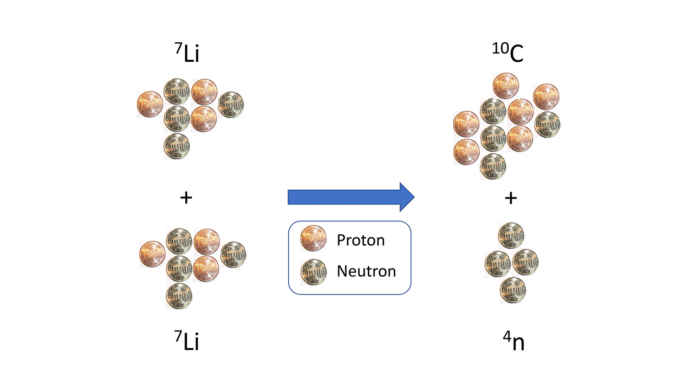Since the 1960s, physicists have been searching for abound, or nearly bound, state of four neutrons, called tetraneutron. But, no evidence for its existence was reported. Studying these particles in more detail could help us better understand the properties of neutron stars.
Experiments by a team of physicists of the Technical University of Munich (TUM) found evidence that a particle comprising four neutrons may well exist. The investigation was conducted at the accelerator laboratory on the Garching research campus.
In their experiment, physicists bombarded the lithium-7 target by accelerating lithium-7 particles to about 12 percent of the speed of light. This reaction should generate carbon-10 and tetra-neutron. The outcomes meet the physicist’s expectations: by repeating the same task, they could detect tetra-neutron.
Almost two decades ago, a team of French scientists reported about the measurements of the sought-after tetra-neutron. However, later work by other groups showed that the methodology used could not prove the existence of a tetra-neutron.
In 2016, a team of scientists in Japan bombarded a helium-4 target with a beam of radioactive helium-8 particles to produce tetra-neutrons from helium-4. This reaction should produce beryllium-8.
They were able to detect four such atoms. From their measurement results, physicists confirmed that the tetra-neutron was unbound. Also, they quickly decayed back into four neutrons.
In the new study, the measurements revealed that the tetra-neutron would be roughly as stable as the neutron itself. It would then decay by beta decay with a half-life of 450 seconds.
Moreover, the team’s measurement results matched the signature that would be expected from carbon-10 in its first excited state and a tetra-neutron bound by 0.42 megaelectronvolts (MeV). The team achieved a certainty of well over 99.7 percent or three sigmas through these measurements.
Dr. Thomas Faestermann said, “For us, this is the only physically plausible explanation of the measured values in all respects.”
But in physics, the existence of a particle is only considered conclusively proven once certainty of 5 sigmas is achieved. Hence, the team is eagerly awaiting independent confirmation.
Journal Reference:
- Thomas Faestermann, Andreas Bergmaier, Roman Gernhäuser, Dominik Koll, Mahmoud Mahgoub. Physics Letters B 824 (2022) 136799. Indications for a bound tetraneutron. DOI: 10.1016/j.physletb.2021.136799
